Analysis: Seahawks 2021 Defensive Line Explained
The Seahawks’ 2021 free agency addition of Kerry Hyder Jr. and the departure of 2016 second round pick Jarran Reed caused understandable confusion. Terms like “3-tech," “5-tech," and “big end” were thrown around. Some of these are defensive alignments, some of these defensive roles, and some are both. Yup, that is confusing. I'd guess head coach Pete Carroll likes it this way...
First off, let’s deal with defensive alignments. On the defensive line, coaches give the player a figure that dictates where they should line up.
- 0-tech = head up on the center
- 1-tech = outside shoulder of the center
- 2i = inside shoulder of the guard
- 2-tech = head up on the guard
- 3-tech = outside shoulder of the guard
- 4i = inside shoulder of the tackle
- 4-tech = head up on the tackle
- 5-tech = outside shoulder of the tackle
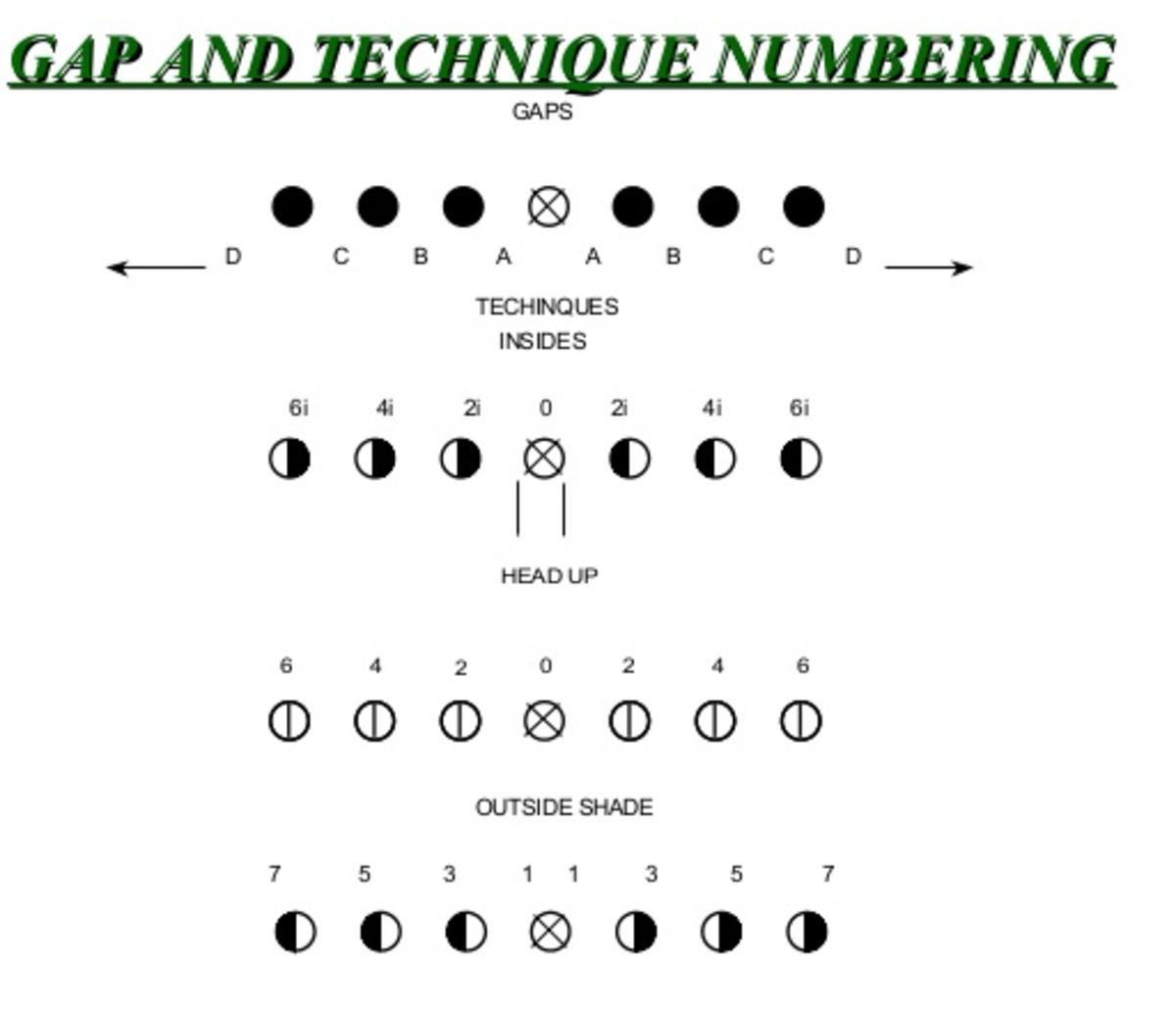
Seattle is a base 4-3 personnel defense. Even in years where they end up running more nickel, 4-2-5 defensive personnel, Carroll’s scheme stems from four defensive linemen, three linebacker roots. The three linebackers are often referred to as: “Sam" (strongside), “Mike” (middle), and “Will" (weakside).
So the defensive line would be made up of two defensive ends and two defensive tackles, right? While that is true of Carroll, the head coach gets specific with what he wants from each player, searching for more distinct prototypes that lead to clearer roles—the same is true of the linebackers too.
The two defensive tackles are the nose tackle and the three-technique. The beefier nose can line up from 0-tech to 2i depending on the defensive front, family, and check Seattle is in. Former Seahawks defensive tackle Brandon Mebane played 1-tech in an old-school tilt stance; however, we haven’t seen others employ this stance since.
The 3-tech largely stays on the outside shoulder of the guard, although he does occasionally bump to a 4i. The Seahawks have plug-and-played their early down defensive tackle pairings. However, there has been a fascination from the franchise in trying to find genuine pass-rush from the 3-tech spot. Interior rush is always nice and it would ease the defensive transition to pass-rush focused fronts on passing downs.
The two defensive ends are more obviously different. The LEO role, once branded the “elephant," is lighter and speedier. The weight ranges from 245 pounds to 275. An extreme example of this is Clay Matthews at USC, who started as a SAM LB before making the switch to defensive end. Many thought Carroll was running a 3-4 defense because Matthews was in a two-point stance. Bruce Irvin started his NFL career as a LEO and then moved to SAM. A SAM with rushing ability can move down to LEO defensive end in passing down, sub-package situations. The LEO is supposed to be the defense’s best pure pass-rusher, which is how Carlos Dunlap earned the role in 2020 and, presumably, 2021.
The 5-tech role is bigger and closer to a defensive tackle build: ideally 280-295 pounds. On the early downs, they have to be comfortable two-gapping or playing one-and-a-half gaps. In a perfect world, this dude is lining up on the outside shoulder of the offensive tackle.
However, the NFL is very problematic. As a result, the 5-tech role does not always align on the outside shoulder of the tackle. Multiple sources have described the position to me as a “ ig end.” This term is less misleading; therefore I’ll solely be using “big end” moving forward. Red Bryant is a success story of the big end role. Michael Bennett also played there. The skill-set is deployed from 9-technique all the way down to 3-technique.
This is where we get into flex-side and solid-side discussion. These are crucial terms in the Seahawks' scheme. It’s their main way of setting the strength of their defensive fronts and rotating their middle field closed coverage. The solid-side is the side in which the Y tight end lines up on—the closed part of the offensive formation. The flex-side is away from that Y tight end, often to the split end (X receiver) and on the open side of the offensive formation.
The LEO being faster and a better rusher, plus tending to be smaller, means that it makes sense to align him wider and to the side of the 3-technique defensive tackle. The 3-tech means that the LEO is very hard to double-team, facing just a one-on-one with the tackle. Thinking more negatively, the 3-tech offers greater protection.
As the big end is, well, bigger and possesses some inside skillset, it makes sense to align him away from the 3-technique and to the bubble. A key part of Seattle’s defense has been, rather than aligning the big end in a 5-technique alignment, reducing him down to 4-technique or 4i to remove the obvious running bubble and crowd the major running lane. Some drawings and screenshots will help you visualize this.
UNDER
4-3 under is what Pete Carroll is famous for and what the Seahawks head coach credits Monte Kiffin most for teaching him. It’s here where the LEO really does look like another outside linebacker, especially in a two-point stance, and the defense appears more like a 3-4. It used to be called a 50-slide or what 5-2-origin coaches would call "weak eagle." The basic look has the big end stay in that 5-tech alignment.
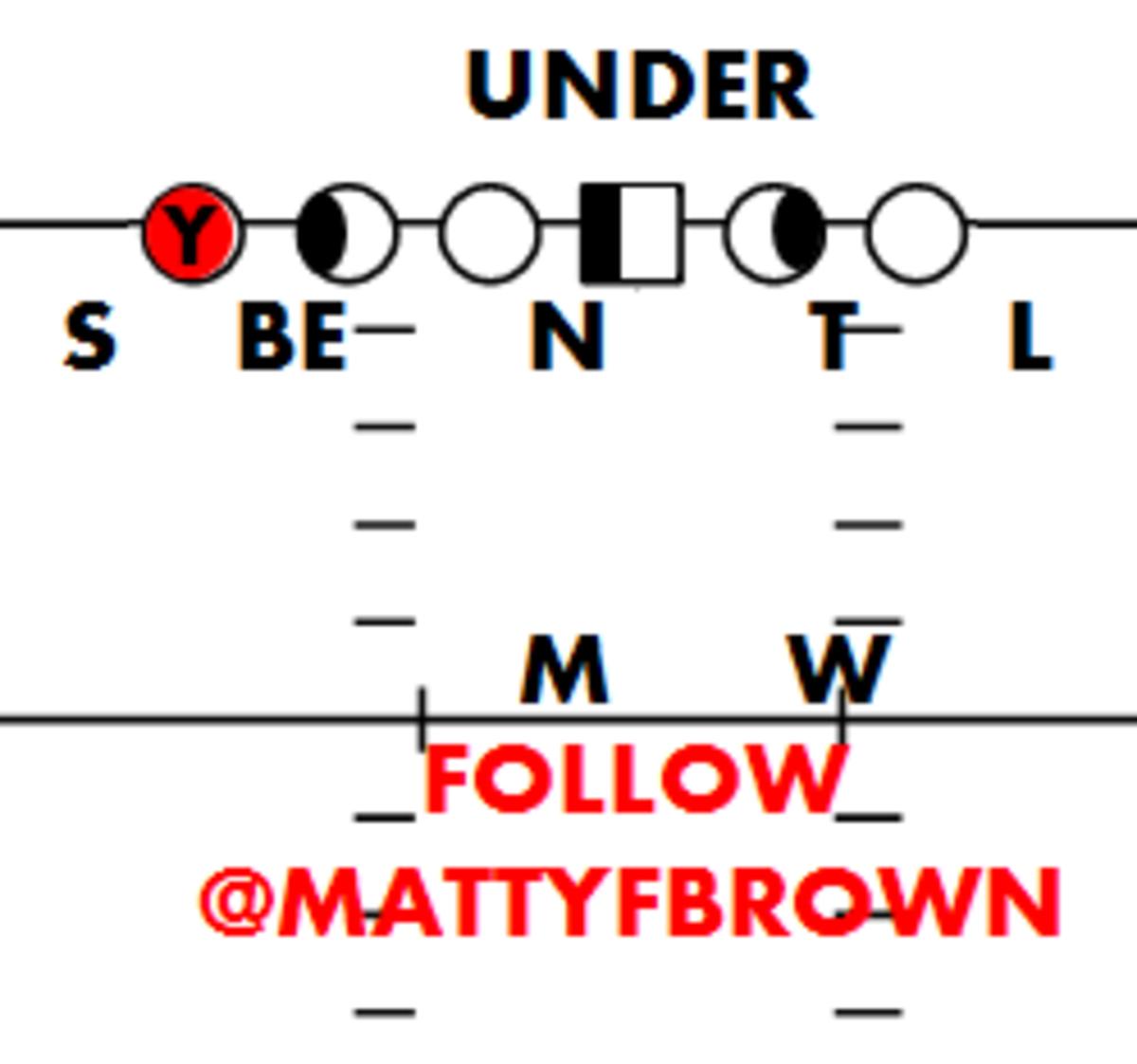
Reduction happens more regularly to further muddy the B-gap bubble and keep the second level clean to flow to the most obvious area. It’s here where legendary big end Red Bryant made his money, protecting the B-gap bubble while also being able to win to the C-gap from head-up 4-tech.
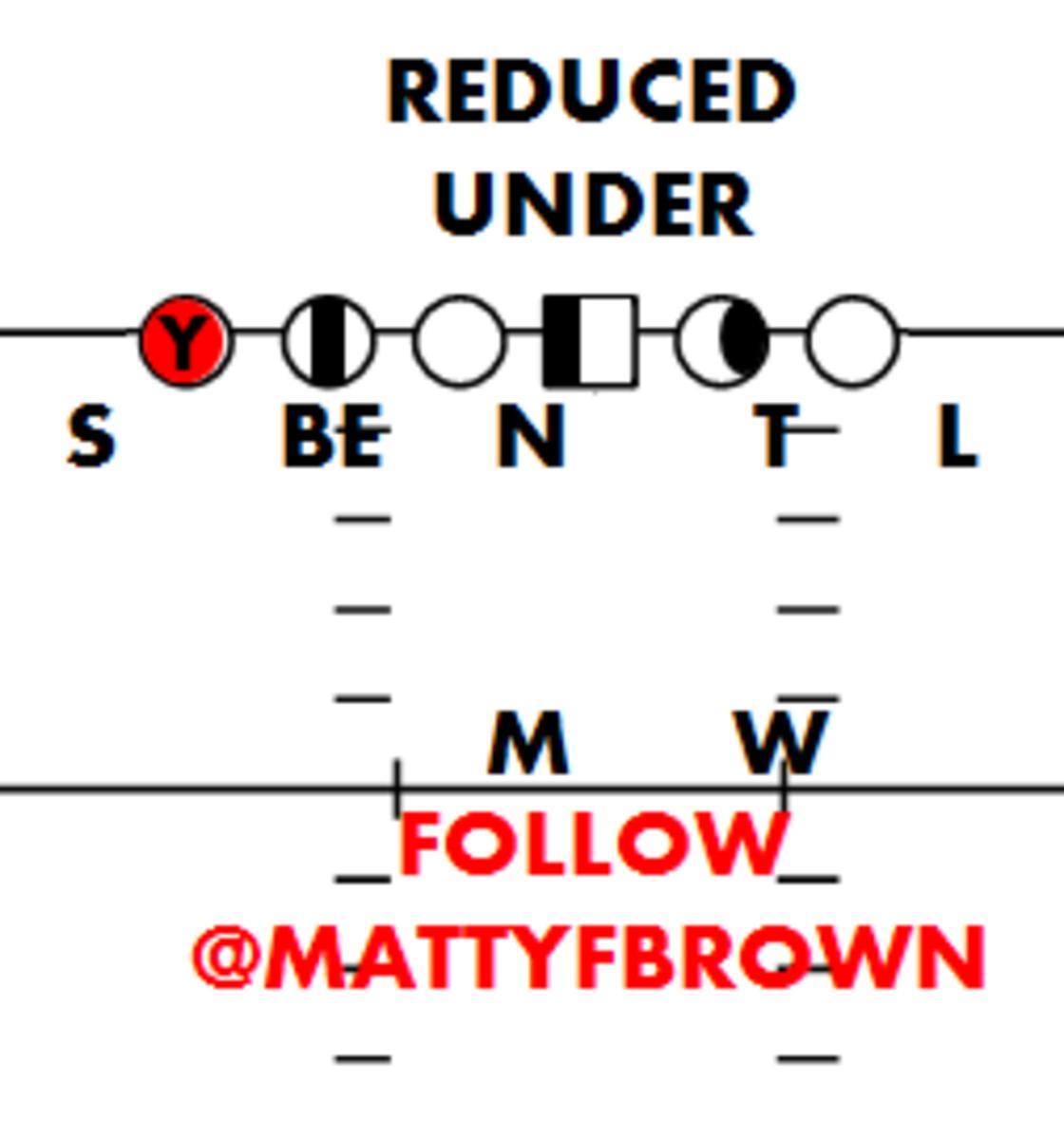
Expect to see this reduced under front which Seattle ran v the Ravens. It's also mint-like and the #Seahawks liked it against inverted veer.
— Under Zone X (Frisco)/Phoenix Check/Stick Slasher2 (@mattyfbrown) September 15, 2020
4i-NT-Heavy3t-7/9
Flexside S rotation, Cover 3 Weak Sky. Jamal Adams can hunt from backside.
Idk what Seattle calls this D/Gameplan adj. https://t.co/02MgV8E2n5 pic.twitter.com/3ULpGl1dL2
OVER
Carroll does, in fact, run an over defense as well—sorry if that contradicts your Xs and Os meme. Over is a bit trickier on the defense because there is usually three immediately available bubbles for an offense to target. Under tends to have two bubbles and places more defenders to the strong B-gap bubble than the offense has blockers.
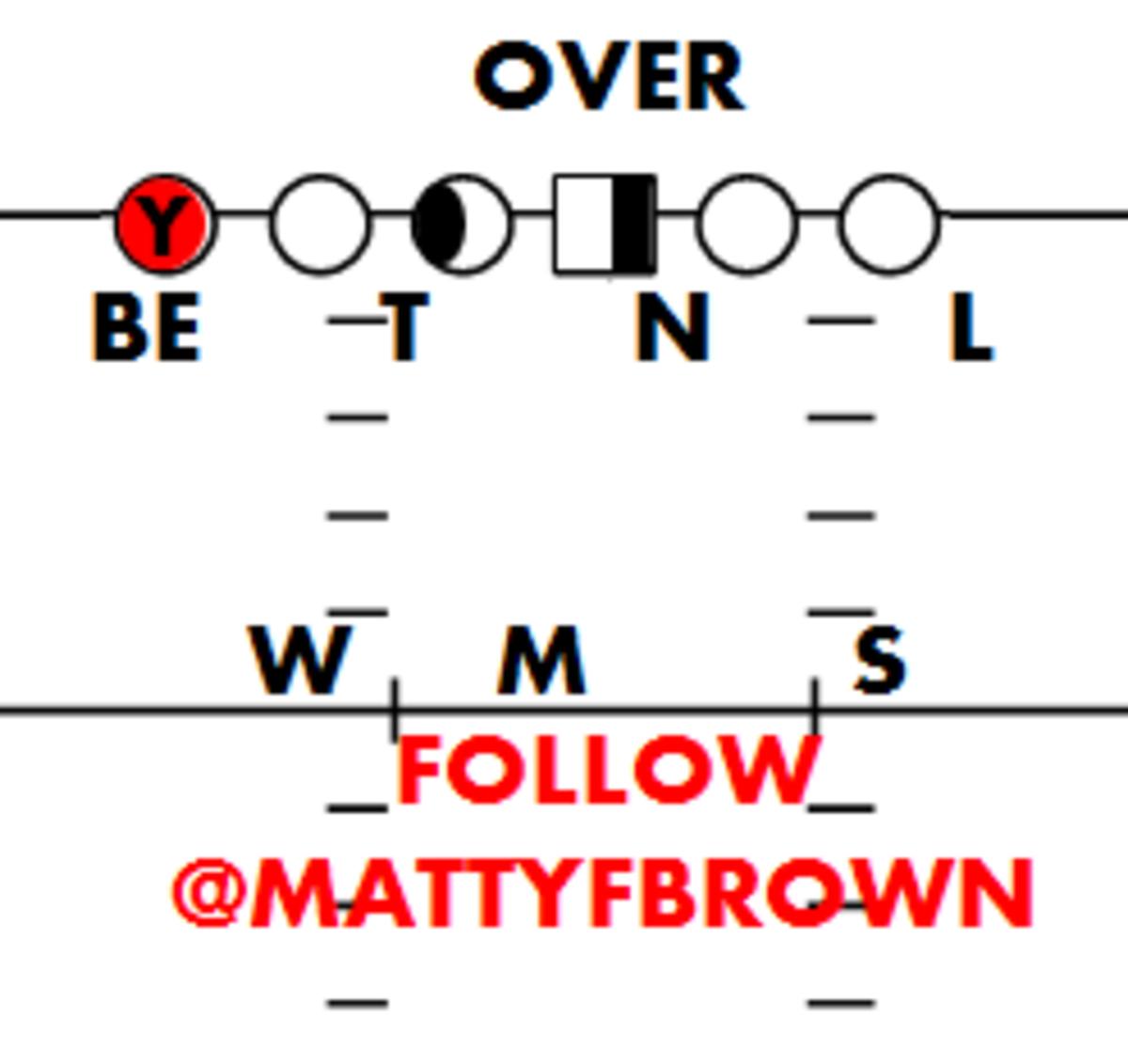
While in very basic over, it makes sense for the LEO to play on the flex-side of the defense versus a tackle man-to-man. It also makes sense to reduce the front down and put the big end to the B-gap bubble of over and help the LEO by placing the 3-tech to his side. In recent years, Seattle has had this big end play more of a 4i technique rather than head-up on the tackle, perhaps because they have been unable to find a true two-gapping technique like Red Bryant.
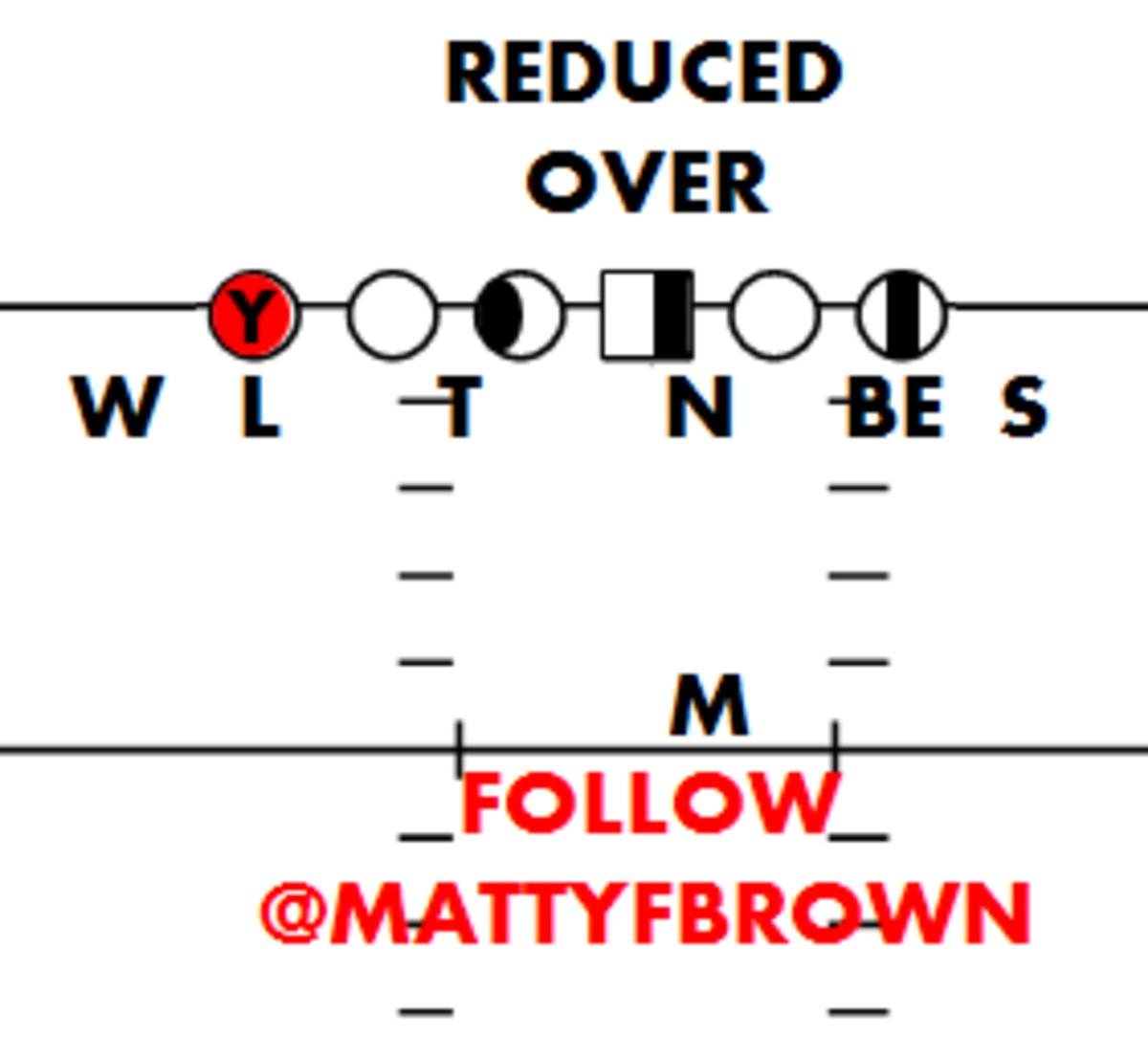
Here the Seahawks did it versus the Rams. Again Cover 3 Buzz worked as a concept versus the play-action leak, before the play broke down and Bobby Wagner had a bad moment in his underneath hook zone. Staggered hooks remove over routes, 6-1 stops wide zonepic.twitter.com/HRBw118MZ5
— Under Zone X (Frisco)/Phoenix Check/Stick Slasher2 (@mattyfbrown) October 21, 2019
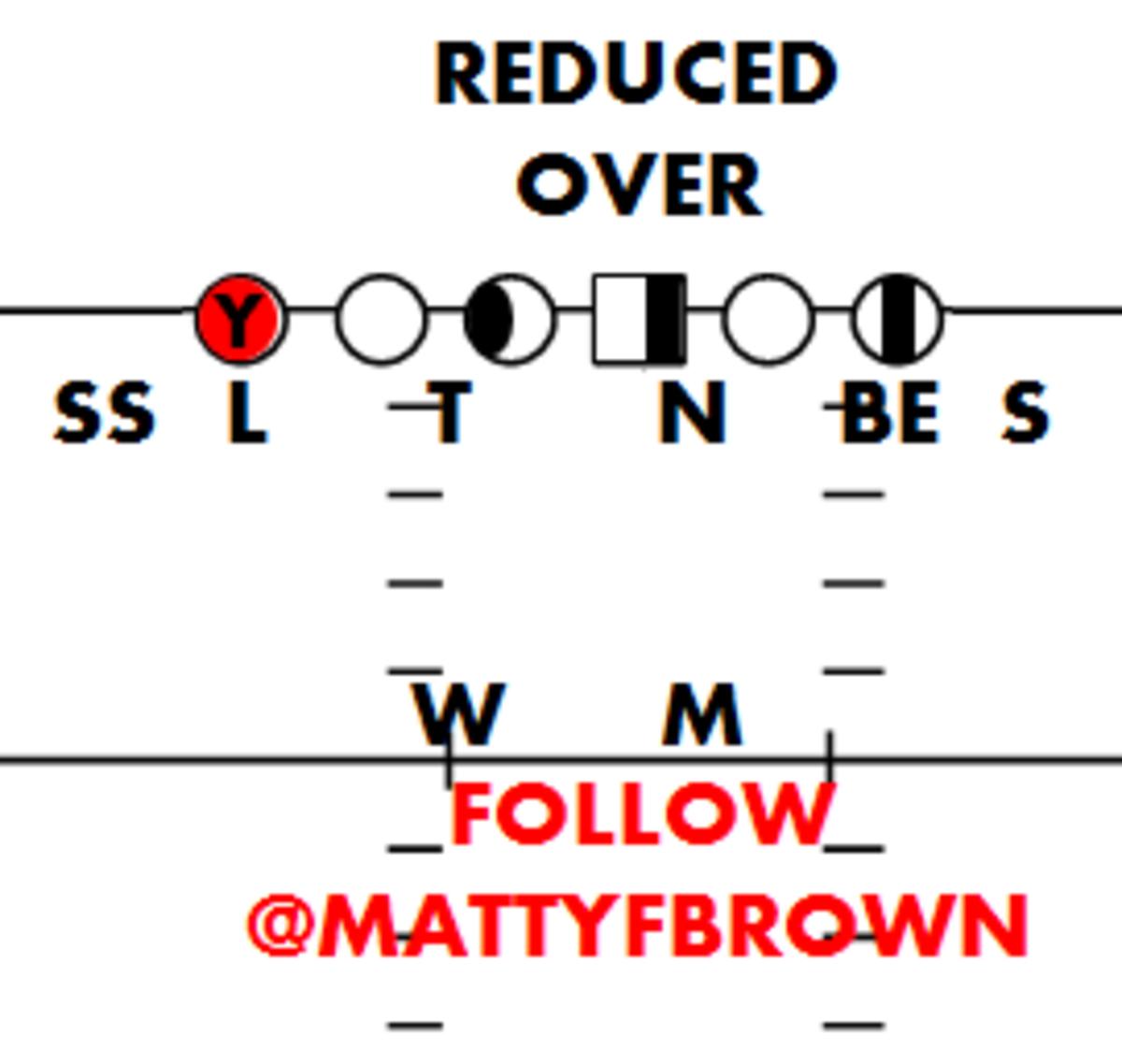
Going into under center trips was Kitchens' answer to this play. He called play-action leak. Kendricks down at the LOS was slow to get to his curl-flat, and never turned around to 👀the tight end. The Seahawks messed up the techniques on the back-end too.pic.twitter.com/uZ1ibBtLeJ
— Under Zone X (Frisco)/Phoenix Check/Stick Slasher2 (@mattyfbrown) October 21, 2019
BEAR
The 2020 Seahawks started with massive struggles on defense. Although their second half of the season improvement largely came from facing inferior offenses, there were clear coaching adjustments that worked. Most notable was the increased simplicity in calls and a concentrated obvious base defense. Rather than opting for 4-3 under (favored by Carroll against 21 personnel) or 4-3 over (the primary option versus 12 personnel), Seattle went for 4-3 bear. It won them the NFC West and was perfect at shutting down largely series-driven offenses who look to set stuff up with run-action while dressing up core explosive passing plays with the same appearance.
This is considered part of the under front family. Rather than using the solid side or the flex side, the front has aligned its players based off the passing strength, with the receiving strength considered the closed side. This saw the SAM, big end and MIKE go to the receiver strength and the closed (solid) side. Having the LEO away from the strength call, the weakside of the passing strength, the open side or the flex side, is very much an under philosophy. Therefore, the 3-technique traveled with the LEO.
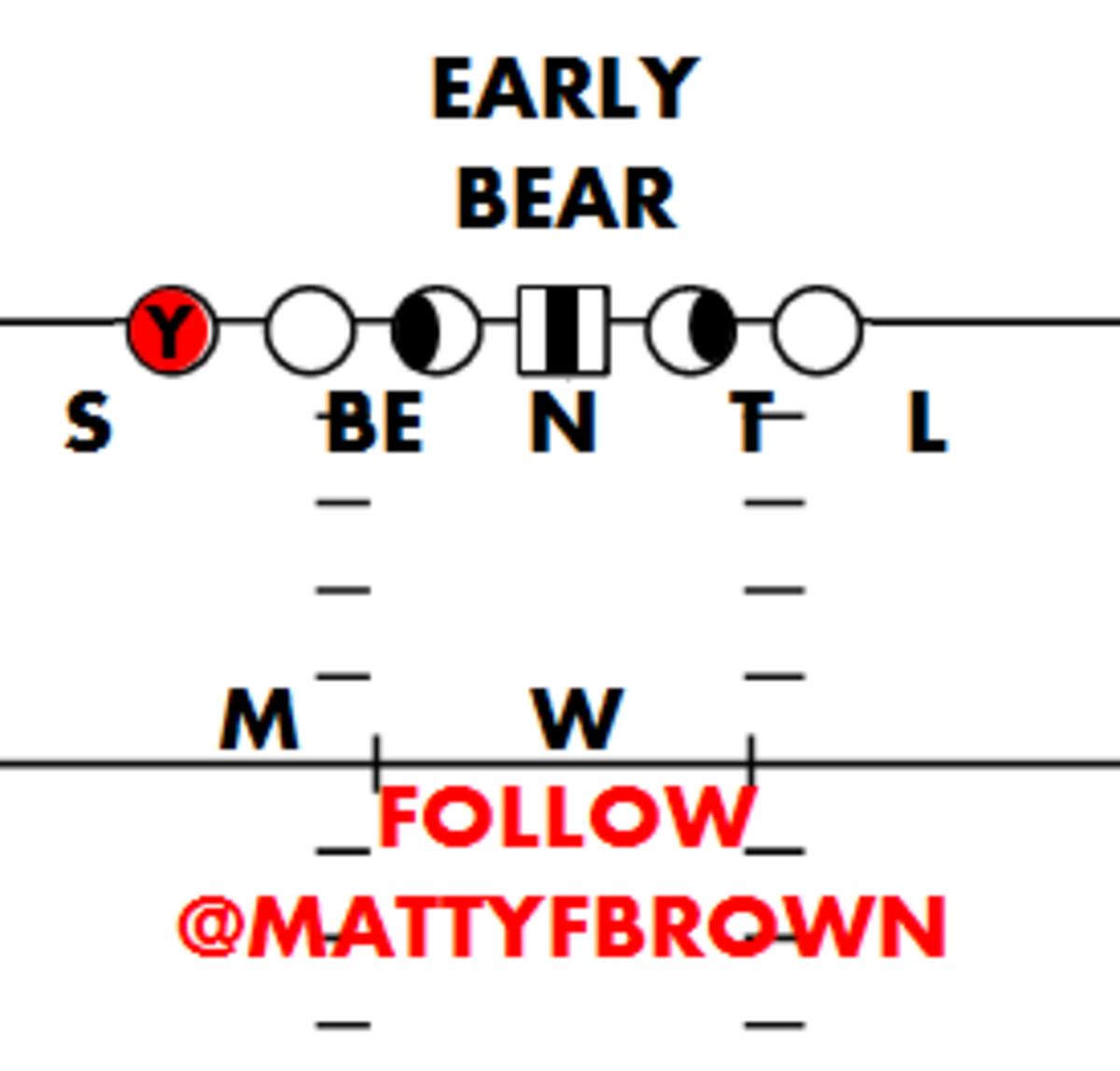
However, in 2020, the front appeared to be aligning based off boundary or field rules. When it was Cover 3 or Cover 1, the SAM typically went to the boundary and the LEO to the field (like over). When it was Cover 2, the SAM went to the field and the LEO to the boundary (like under). Seattle moved the front a fair bit in certain situations to stay gap sound or maintain pressure with that interior three spacing.

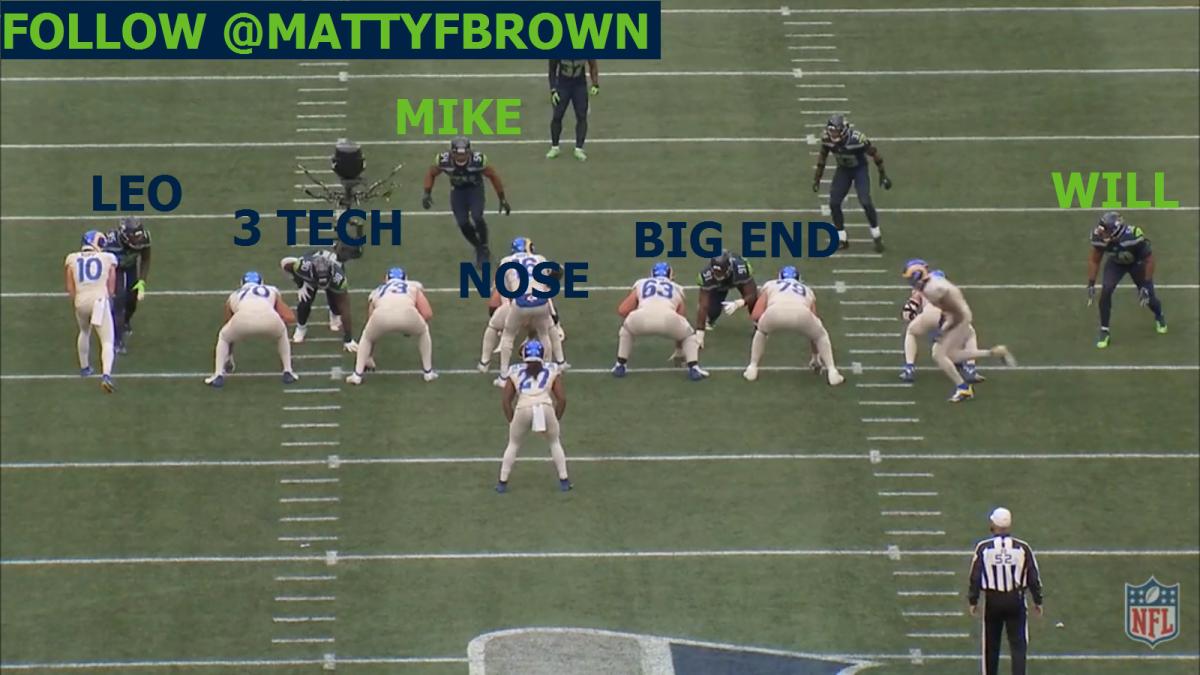
Why would the Seahawks align this front to the field when it is Middle Field Open defense and to the boundary when it is Middle Field Closed?
— Under Zone X (Frisco)/Phoenix Check/Stick Slasher2 (@mattyfbrown) January 5, 2021
Conflict and spacing. I've drawn up rough spacing of the front versus no receivers to give you an idea. Here's Boundary and Field MFO pic.twitter.com/PX4GWQ1MFz
Here's the Middle Field Closed Cover 3 sky drawing. This is the coverage the Seahawks have favored from bear.
— Under Zone X (Frisco)/Phoenix Check/Stick Slasher2 (@mattyfbrown) January 5, 2021
By losing an underneath player in exchange for an extra deep player (4 under, 3 deep instead of 5 under, 2 deep), aligning to the boundary becomes preferable + necessary pic.twitter.com/37neM3rTEI
The Seahawks coaching staff gameplanned this to sometimes be Tite front-like: 4i-0-4i (check out the Cardinals' quarterback run in Seattle's Week 11 victory) and it also felt like the 3-tech alignment to a tight end/three-man surface would bump into a 4i. I also think I saw the 3-tech to the SAM (the big end) bump into a 4i to make containing versus the pass easier in four-man rush situations. The 4i looks to get hands on the tackle and win back to the C-gap if necessary. Look out for a long form, offseason article from yours truly on these bear fronts.
So where does Kerry Hyder Jr. fit into all of this and how does it impact the other players? Let’s assume that bear-as-base continues in 2021. It would be puzzling for the Seahawks to drop their heavy usage of the front given it solved so many defensive issues and suited their players perfectly (A reunion with K.J. Wright would be ideal here).
Despite Hyder filling in for Nick Bosa as the 49ers’ LEO and San Francisco’s schematic similarities to Seattle, Hyder is a big end with the Seahawks given Dunlap’s return, the potential of Alton Robinson, and the promise of Darrell Taylor. Jarran Reed actually played more big end than you’d think for the Seahawks in 2020.
L.J. Collier is a big end too. He spent much of 2020 in a 3-technique or 4i alignment as a result of the bear fronts placing the big end in this alignment, so he was still playing the big end role—it just didn't appear that way. Rasheem Green probably played more 3-technique (technically) than Collier, given he spent more time aligned to the LEO's side. Collier will not spend more snaps in 2021 aligned at 3-technique than he did in 2020. Pure pass-rush situations where the defensive core gets as far removed as possible is when we may see Collier or Hyder aligned as a lone 3-tech in a shaded nose, four-down front. As I have explained, this is part of the big end role.
Bear almost allows the two men flanking the nose tackle to be whoever the coach likes as a match-up, with a lot of rotation possible. Emphasis on 'almost:' one of the guys inside has to be in that big end role. This is because the defense does not want to be in a position where they are unable to adjust to the offense.
Say the offense shifts into an empty backfield pre-snap. In that instance, Seattle might check into a four-down look for better pass rush contain. This would require the big end to bump outside to a 5-technique alignment. It would be better to have Hyder or Collier doing this than Poona Ford or Al Woods.
The word count is approaching the 2000-word mark and yet my explanation feels inadequately brief (Feel free to hit me up on Twitter @mattyfbrown with questions). Nevertheless, here is what I think the 2021 defensive line depth chart is pre-draft:
- LEO: Carlos Dunlap, Benson Mayowa, Alton Robinson, Darrell Taylor
- Big End: Kerry Hyder Jr., L.J. Collier, Rasheem Green
- 3-Tech/Nose Tackle: Poona Ford, Bryan Mone, Al Woods, Cedrick Lattimore
- Nose Tackle/3-Tech: Bryan Mone, Poona Ford, Al Woods
Bear versus an outside zone-heavy team would benefit from Woods’s 36-inch arms to defend the guard reach block from 3-tech and Ford’s quickness from nose tackle to smack the center back before lagging to the backside A-gap and hustling to the ball, almost like the run-through defender in the fit.
You can get a big end who plays as a LEO sometimes. You can get a 3-tech/big end. There is natural carryover between each role, not just SAM to LEO or LEO to SAM. Pete Carroll’s defensive fronts will aim to slot each defensive lineman into the best role for their skillset.
